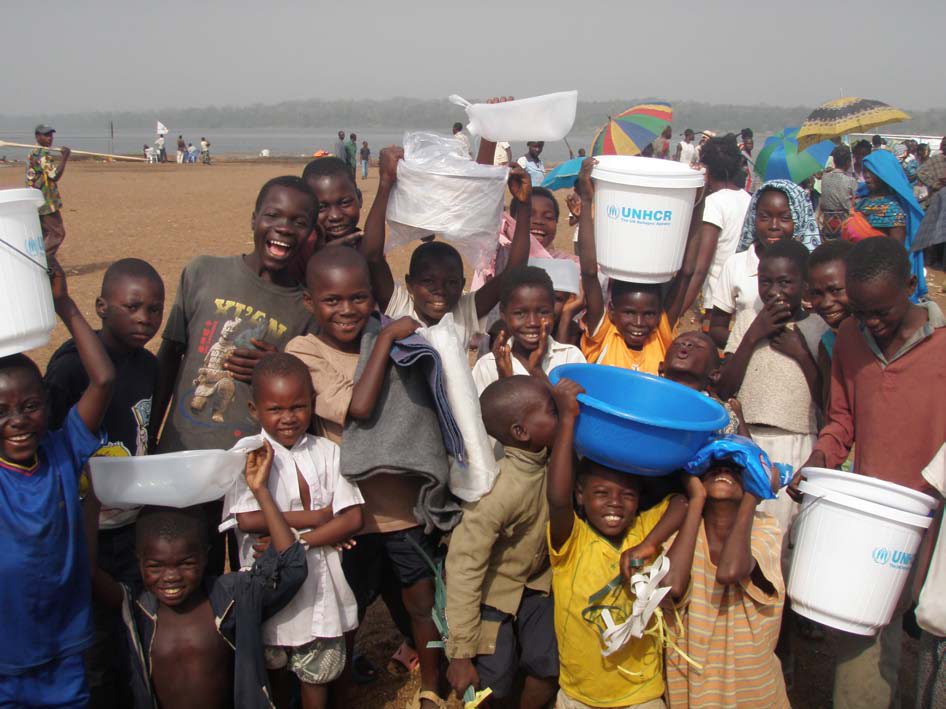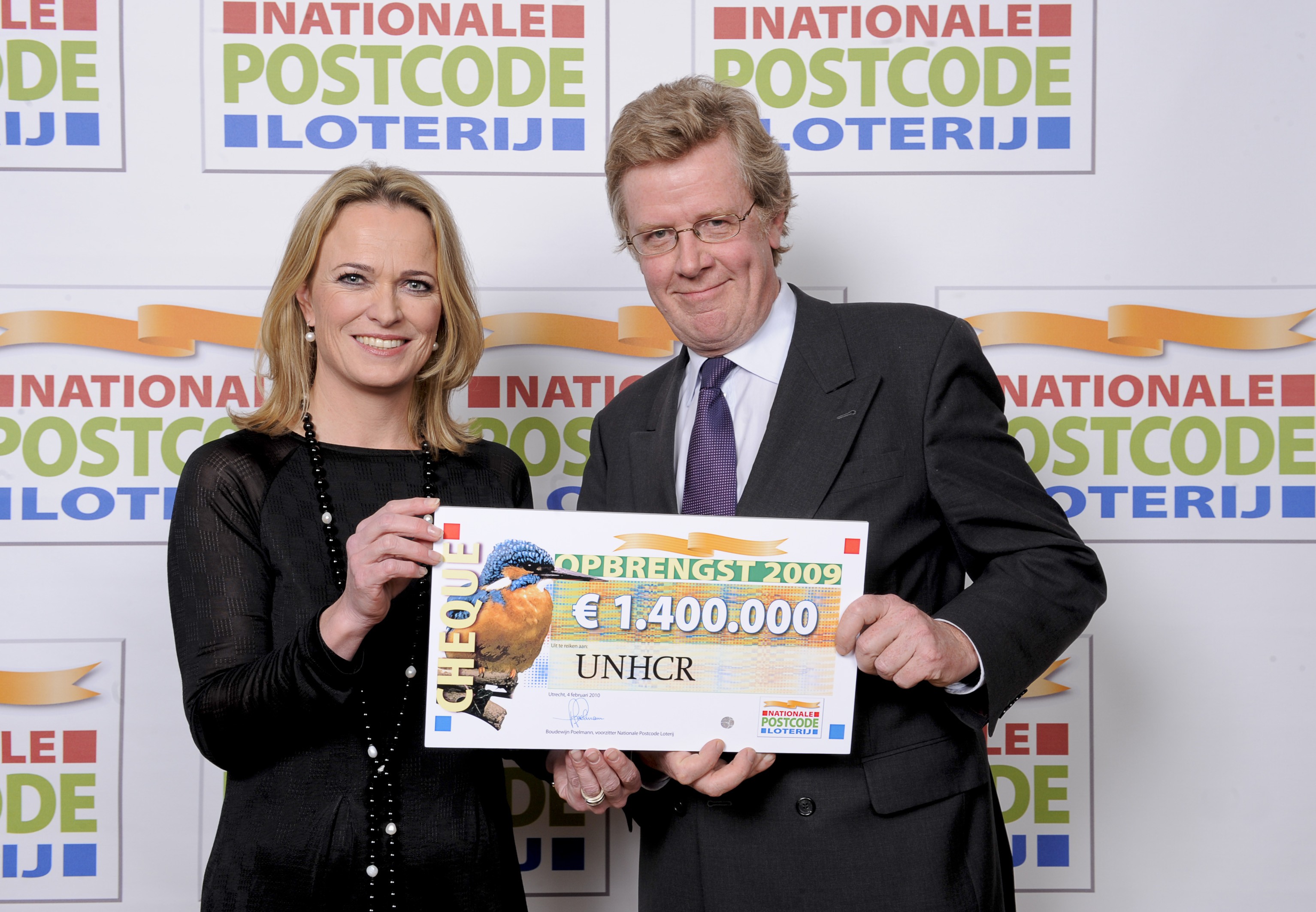Seeking out the spontaneous camps in Pakistan
Seeking out the spontaneous camps in Pakistan

SIRAN VALLEY, Pakistan, December 14 (UNHCR) - The Land Cruiser crawls up the narrow, winding, dirt track, hugging the mountain round hairpin turns where part of the earth has fallen away. In the opposite direction, a tractor bulging with hay approaches. There is an awkward standoff before the Land Cruiser backs off, manoeuvring itself out of the way inch by inch through a smattering of snow. One false move and it would plunge into the icy river thousands of feet below.
The passengers vacate the car. Ignoring the nail-biting cliff-hanger, Ashfaq Ahmad points to the tractor's precious cargo: "This hay is good for winterization. Put some below the tent, and it provides padding and warmth - especially in the highlands."
Ashfaq, a seasoned mountaineer, knows what he's talking about. He is part of a UNHCR team that is travelling off the beaten track to assess so-called 'self-settled' or 'spontaneous' camps set up by earthquake survivors in the Siran Valley, in Pakistan's North-West Frontier Province.
Along the way, the team sees a scattering of shelters of all shapes, sizes and colours standing out from the patchwork green of the terraced valley. There are tents, wooden structures, and dome-shaped houses made of corrugated iron sheets. Some are perched close to the snowy peaks; others are located precariously at the foot of landslides that have left long, white gashes down the rock face.
UNHCR has identified at least 333 such self-settled camps that have sprung up spontaneously in the quake zone. These camps range from big settlements that have mushroomed in and around major towns, to small clusters of tents pitched in the backyards of damaged houses in the remote valleys. Many of them are poorly planned, overcrowded and lack basic services such as water, sanitation, health care and education. If left unchecked, diseases like scabies, respiratory infections, pneumonia and diarrhoea could easily break out.
Tracking these scattered camps has been an enormous logistical challenge in Pakistan's mountainous north, say UNHCR staff who have had to drive, and sometimes hike for hours to reach remote villages. The agency has been working with the government, other UN agencies and non-governmental organizations (NGOs) to identify and assist these sites before winter cuts off all access.
Soon after the tractor impasse, the UNHCR team reaches a cluster of tents called Service Industry Camp. A total of 112 families from the area live here in tents (provided by the army and service industries) scattered over the terraces that line the valley. Even under the mid-day sun, the wind carries a chill that cuts to the bone.
"When it snowed last weekend, some of the tents collapsed," says Yaseen, a man with green eyes. "This area gets four to six feet of snow every year."
Another villager, Bibi Parijan, says "We made a fire in our tent and it burnt down. My daughter was hurt and sent to hospital in Mansehra." The 12-year-old girl is recovering in the hospital about 2 hours' drive away. The government has offered compensation for the family's losses and injuries, but Bibi still needs a new tent.
"About 60 percent of the houses were destroyed," says Yaseen. "Luckily, we managed to salvage some food and household items from the house. And we can still use the toilets." The NGO Catholic Relief Services is building more latrines to meet the villagers' needs.
The villagers say water is their most urgent requirement, estimating that 40-50 percent of the pipes are broken. A trickle of water is all that appears when they turn on the tap. To assess the level of damage and repairs needed, the UNHCR team joins one of the villagers to check the water source several hundred feet above the village.
Other damage includes a collapsed school - 120 children now attend classes in the open - and a destroyed clinic. Villagers now have to trek down 11 km of mountain roads to get medical assistance.
Asked why he won't consider moving down to government or NGO camps on lower ground, despite the challenges of staying near his village, one man says, "I can't leave my animals," referring to the livestock that provides a common livelihood in the mountains. Others say they are afraid of losing their land, or that their culture prevents them from living among strangers.
Yaseen says simply, "We are happy here. It's our homeland. We don't want to move. The NGOs have given us a lot. We hope that with some iron sheets, we can stay and fight the winter, insh'Allah."
UNHCR's Ashfaq agrees: "These are tough mountain people who are used to harsh winters. Many have told us they don't need camps - they simply need materials to repair their homes."
Indeed, on the way up, villagers could be seen unloading wooden beams and shouldering long rolls of corrugated iron sheeting back up to their homes. They often outpace the trucks lumbering along the rocky roads. Construction is going on throughout the valley.
The military and NGOs such as Mercy Corps have already distributed relief items and building materials to many of the valley's estimated 51,000 residents. As head of the camp management cluster under the joint UN response, UNHCR informs the local authorities of gaps it finds in the self-settled camps. It also shares the information with partners like UNICEF, which is overseeing water and sanitation.
"It's better to help these people in their villages so that they can stay and rebuild where they are," says Michael Zwack, who heads the camp management cluster. "No matter how hard we try, camps cannot provide ideal living conditions for them."

The UN refugee agency has so far distributed 20,067 tents, 60,875 plastic sheets, 322,904 blankets, 27,398 jerry cans, 21,754 kitchen sets, 10,499 mattresses, 3,751 stoves, 1,209 sleeping bags and 26,224 bars of soap to planned camps run by the Pakistan authorities or NGOs, as well as to self-settled camps and remote villages above 5,000 feet.
It is currently providing material and technical assistance in 40 planned camps as well as in an increasing number of the self-settled camps. In addition to the aid distribution, 20 mobile teams are now on the ground fixing technical problems like water and sanitation, as well as training camp residents to winterize their tents, and deal with issues like improving hygiene, and minimizing fire hazards.
By Vivian Tan in the Siran Valley, Pakistan








